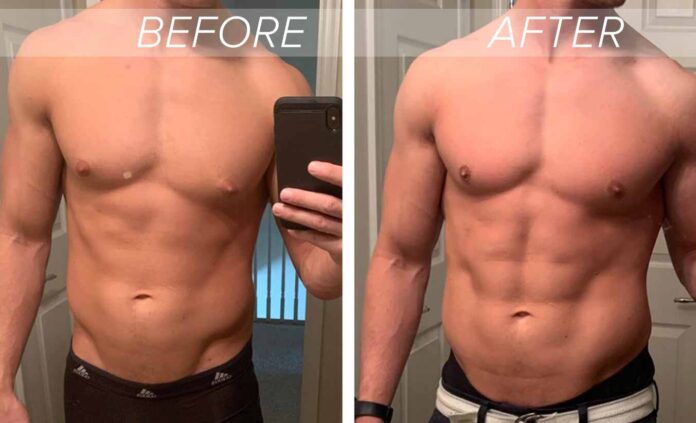Gynecomastia, the enlargement of male breast tissue, is a condition that can cause significant emotional and psychological distress. While surgical options are available and often necessary for severe cases, medications also play a critical role in managing this condition. This blog post delves into the various medical treatments for gynecomastia in Dubai, providing an overview of the options and when they are appropriate.
Understanding Gynecomastia
Gynecomastia is the benign enlargement of male breast tissue, typically caused by an imbalance between the hormones estrogen and testosterone. It can affect one or both breasts and may occur at any age. The condition can be linked to various factors, including puberty, aging, medications, and underlying health conditions.
When Are Medications Used in Gynecomastia Treatment?
Medications are usually considered when gynecomastia is detected early, especially during the initial phase when the breast tissue is still proliferating. They are also used when the condition is due to an underlying health issue that can be managed pharmacologically. However, medications are less effective in cases where the gynecomastia has been present for a long time and significant fibrotic tissue has developed.
Types of Medications for Gynecomastia
1. Selective Estrogen Receptor Modulators (SERMs)
SERMs, such as tamoxifen and raloxifene, are often used to treat gynecomastia. They work by blocking estrogen receptors in the breast tissue, thereby reducing the proliferation of glandular tissue.
Tamoxifen: This medication is particularly effective for tender and painful gynecomastia. Studies have shown that tamoxifen can reduce breast size and tenderness in many cases.
Raloxifene: Although less commonly used than tamoxifen, raloxifene has also shown effectiveness in reducing breast tissue size in gynecomastia patients.
2. Aromatase Inhibitors
Aromatase inhibitors, such as anastrozole and letrozole, reduce the production of estrogen in the body. These are especially useful in cases where gynecomastia is due to high levels of estrogen.
Anastrozole: This medication is often prescribed for pubertal gynecomastia and has been shown to be effective in reducing breast tissue proliferation.
Letrozole: Similar to anastrozole, letrozole is used to inhibit estrogen production and is beneficial in treating gynecomastia caused by hormonal imbalances.
3. Androgens and Anti-androgens
Androgens like testosterone can be used to counteract low levels of male hormones, while anti-androgens like spironolactone can help in cases where gynecomastia is due to high levels of androgens converting to estrogen.
Testosterone Replacement Therapy (TRT): TRT can be effective for men with hypogonadism (low testosterone levels), helping to balance hormone levels and reduce gynecomastia.
Spironolactone: As an anti-androgen, spironolactone can help reduce the effects of testosterone that convert into estrogen, thus managing gynecomastia.
Limitations of Medications
While medications can be effective, they are not always a permanent solution. They are most beneficial in the early stages of gynecomastia or when the condition is due to a reversible cause. In long-standing cases or when there is significant fibrotic tissue, surgical intervention might be the only effective treatment.
Surgical Options: Gynecomastia Surgery
When medications are not effective or suitable, surgery is the next option. Gynecomastia surgery involves the removal of excess breast tissue and can provide immediate and dramatic results. For those considering this option, it is essential to understand the procedure, costs, and outcomes.
Gynecomastia Surgery in Dubai and Abu Dhabi
In Dubai and Abu Dhabi, gynecomastia surgery is performed by highly skilled cosmetic surgeons in state-of-the-art clinics. The surgery involves liposuction, excision, or a combination of both to remove excess tissue and achieve a flatter, more masculine chest contour.
Gynecomastia Surgery Cost in Dubai and Abu Dhabi
The gynecomastia surgery cost in Dubai and Abu Dhabi varies depending on the complexity of the procedure and the clinic chosen. On average, patients can expect to pay between AED 15,000 to AED 30,000. It is advisable to consult with multiple clinics to get a detailed cost estimate and understand what is included in the fee.
Gynecomastia Surgery Before and After Results
One of the most compelling reasons to consider gynecomastia surgery is the visible transformation it offers. Patients can often see significant improvements immediately after surgery, with continued refinement as the swelling subsides over the following weeks. Many cosmetic surgery clinics in Dubai provide before and after photos of gynecomastia to showcase the results, helping potential patients set realistic expectations.
Choosing a Cosmetic Surgery Clinic in Dubai
Selecting the right cosmetic surgery clinic in Dubai is crucial. Look for a clinic with board-certified surgeons who have extensive experience in performing gynecomastia surgery. Additionally, ensure that the clinic has positive reviews and provides a comfortable and supportive environment.
Conclusion
Gynecomastia can be a challenging condition, but there are effective treatments available. Medications can play a crucial role in managing the condition, particularly in its early stages. However, for many patients, surgical intervention offers the most definitive results. If you are considering treatment for gynecomastia, whether through medication or surgery, consult with a healthcare professional to explore the best options for your specific situation. With the right approach, it is possible to achieve a more confident and comfortable life.

